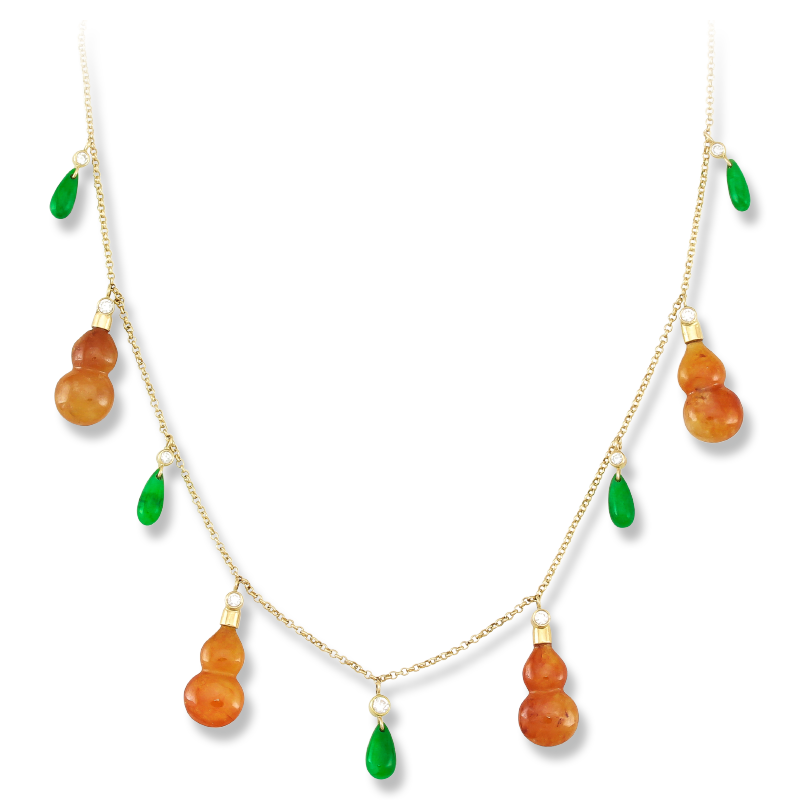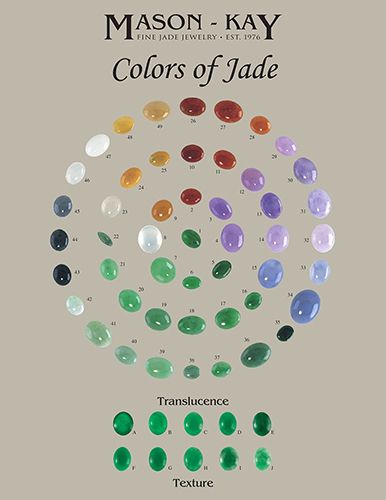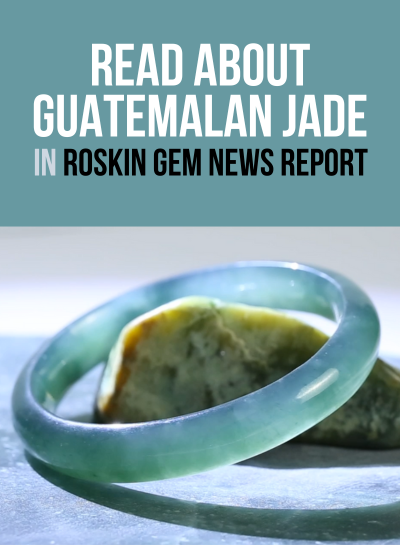
Technical Characteristics of Jadeite Jade
Jade refers to two chemically different stones: jadeite jade, a silicate of sodium and aluminum, and nephrite jade, a silicate of calcium and magnesium. Although different, they share many common characteristics. It was not until 1863 that French mineralogist Alexis Damour discovered the mineralogical diferences between the two jades, although the Chinese were aware of the differences long before.
Jadeite jade, the rarest and most valuable form of jade, is also known as 'Burmese Jade', (after it's traditional and still most important source - Burma). It has been in wide use only since the mid-18th century, and today is considered the 'precious' form of jade. Most 'fine jewelry' items of jade consist of jadeite. Jadeite exhibits a wide palette of sometimes vibrant colors, often with translucence. Green is the most valuable color; in particular, a translucent emerald-green is the most prized of all, and in its finest form is called 'Imperial Green'. Jadeite is also available in lavender, red, yellow, ice (colorless), black and white.
Nephrite, the traditional form of jade, has been used for over 5000 years by many different cultures throughout the world. It is the Chinese, however, that raised the craft of jade carving to an art, and who appreciated it on the deepest levels; the rich mix of mythology and religion in China seemed to find its highest expression in the virtues of jade. Nephrite colors are subdued, and range from grey to brown to blue-green to black. Translucence is rare. The highest quality comes from Siberia, and sometimes New Zealand or Australia. Taiwan has good nephrite, but the giant of all producers today is British Columbia.
Next to hematite ("black diamond"), jade is the toughest of all known stones. This extreme durability explains its early use, by many cultures, as tools for farming and hunting. No other stone appears in such a wide variety of forms; bangles, hololith rings, intricate and delicate carvings and statuary. It is jade's unparalleled toughness that accounts for its wide variety of uses, and it is this very toughness that allows for the unmatched delicacy of carving one finds in jade.
No other stone can be carved as a continuous chain from a single piece of material and endure as jewelry or statuary for centuries. Because of its toughness, jade even appeals to the aural senses, for it is said when a "jade [bangle] is struck, it rings true."
It is this same durability that allows a family to pass on a cherished piece from generation to generation and elevates jade from the realm of an ordinary gemstone to a priceless heirloom.
| Technical-Characteristics | ||
|
|
Jadeite
|
Nephrite
|
| Texture | interlocking granular structure
(microcrystalline) |
interwoven fibrous structure
(cryptocrystalline) |
| Surface Luster | vitreous, sometimes greasy | greasy, sometimes vitreous |
| Fracture Structure | granular, possibly splintery | splintery, possibly granular |
| Refractive Index | 1.65-1.68 | 1.60-1.63 |
| Specific Gravity | 3.3-3.8 | 2.9-3.0 |
| Hardness (Mohs) | 6.5-7.0 | 6.0-6.5 |



